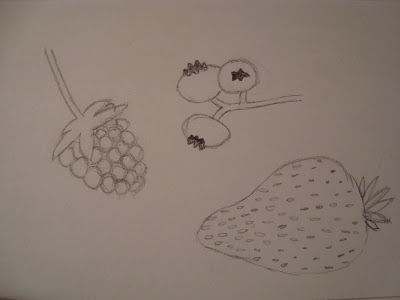So this week I had the task of watching an "art" film. I ended up watching Eternal Sunshine of the Spotless Mind. I had seen the movie once before but I think I was to young to follow the storyline and have any understanding of what was going on. But below is a conversation that I had with a friend who had also watched it, and our thoughts about the movie.
Robyn says
What did you think of the movie?
Emily C says
You know, I had seen this movie a while ago and I remember being totally confused, so this time around I was looking forward to watching it and having a better understanding. As it turns out, I think I'm just as confused as the first time.
Robyn says
I watched for the first time and i was really confused through like the whole thing but then i started to get it towards the end.
did u like it?
I didnt at first, i keep thinking what is the point of this movie but i liked after it was finished
Emily C says
I did enjoy the love story part of it. It wasn't quite your typical romance story. And I also though that the whole idea of being able to erase a part of your memory is interesting. So I guess overall I did enjoy watching it.
Robyn says
Yeah, I liked the earasing the memory part too, it was different. I liked the proccess of the erasing part too.
When they kept flashing back to the past it confused me
Emily C says
I thought it was pretty clever when Joel was in the process of having his memory erased but then he cahnged his mind. It was neat to see him trying to figure out a way to save Clementine and hide her in parts of his memory
Robyn says
Yeah and she knew and she was helping him.
Emily C says
yeah!
Robyn says
I liked how his memories would get mixed up, like it would be Joel siiting on the couch with her and then it started to rain in the living room and then it would be joel as child with clementine acting the part as someone from his past
Emily C says
I think one of my favourite parts was when it flashed back to Joel being a baby and sitting under the table. And you Clementine was a family friend. I thought it was cool how they filmed that part.
Robyn says
Yeah i liked that part too
Did you like the ending? That after everything they went to erase each other from their memories, they still ended up finding each other
Emily C says
I mean I liked it as far as it being nice that they were reunited. But at the same time it definetly confused things for me.
Robyn says
Yeah the whole movie confused me. I figured out out at the end that when her hair is blue its Joels and Clementines present and when her hair is orange it is their past.
Emily C says
I'm surprised you noticed that. I feel like her hair changed so many times that you can't keep track.
Although, after watching it, I definetly see how it could be considered an "art movie". Not only the story line, but also the idea of erasing people from your memory and the way that it was filmed all showed some creativity to me
Robyn says
Yeah I saw the creativity part after watching it too. The switching to the past and present, the ability to see things in a diffferent way.
In the end I liked it and was still confusing but over all a good movie.
Emily C says
Yeah I feel the same. I'm also glad I was reminded of it so that I could come to have a slightly better understanding of it.
Definition of the week: Balance
- when the forms of a picture seem to be proportionate to each other (Schirrmacher & Fox, 2009)
- forms are somewhat equal in appearance
- is acheived with either symmetry or asymmetry
- symmetry or asymmetry depend on whether "the shapes are evenly or equally balanced around some point" or if "the objects are not evenly or equally balanced from a point" (Schirrmacher & Fox, 2009, p.144)
Balance to me seems to become more distinguishable in children's artwork as they get older. As their skills develop they practice and/or strive to have certain aspects of their art be symmetrical or near identical.
References:
Schirrmacher, R., & Fox, J.E. (2009). Art and creative development for young children, sixth edition. Belmont, CA: Delmar
Photo's retrieved from:
http://www.technovelgy.com/ct/Science-Fiction-News-Comments.asp?NewsNum=3020
http://destinihuston.blogspot.com/2011/02/numero-siete-eternal-sunshine-of.html
http://en.wikipedia.org/wiki/Eternal_Sunshine_of_the_Spotless_Mind













